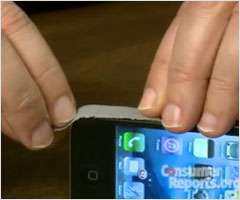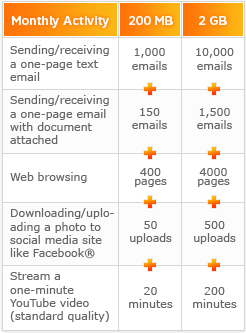Bad engineering and all-out deception from Apple’s public relations department have led Consumer Reports to declare the Apple iPhone 4 defective — not recommended for consideration until Apple either fixes the antenna or declares the phone a dud and recalls them. For those who already made their purchase, the magazine suggests a roll of duct tape may help mask the problem.
[flv width=”320″ height=”200″]http://www.phillipdampier.com/video/Consumer Reports iPhone4 Defect 7-12-10.flv[/flv]
Consumer Reports’ engineers carefully tested Apple’s latest iPhone release and quickly discovered a serious defect in its basic functionality and design. (1 minute)
Apple’s deceptive comments claiming that a “software problem” was responsible for the shoddily-engineered antenna has only fueled additional lawsuits against the company for fraud, deception, negligence, concealment, and breach of warranty. Consumer Reports, which independently tests all of the products it reviews, easily found the iPhone 4 flawed to the point of not functioning in marginal signal areas (something AT&T specializes in providing its customers) just by holding it in your hand.
It’s official. Consumer Reports‘ engineers have just completed testing the iPhone 4, and have confirmed that there is a problem with its reception. When your finger or hand touches a spot on the phone’s lower left side—an easy thing, especially for lefties—the signal can significantly degrade enough to cause you to lose your connection altogether if you’re in an area with a weak signal. Due to this problem, we can’t recommend the iPhone 4.
We reached this conclusion after testing all three of our iPhone 4s (purchased at three separate retailers in the New York area) in the controlled environment of CU’s radio frequency (RF) isolation chamber. In this room, which is impervious to outside radio signals, our test engineers connected the phones to our base-station emulator, a device that simulates carrier cell towers (see video: IPhone 4 Design Defect Confirmed). We also tested several other AT&T phones the same way, including the iPhone 3G S and the Palm Pre. None of those phones had the signal-loss problems of the iPhone 4.
Our findings call into question the recent claim by Apple that the iPhone 4’s signal-strength issues were largely an optical illusion caused by faulty software that “mistakenly displays 2 more bars than it should for a given signal strength.”
No surprise there. Apple’s claims that a “software problem” was responsible for dropping phone calls and misstating AT&T’s reception quality was accepted primarily by tech bloggers who live or die based on the access they get to Apple’s latest product releases, as well as an army of Apple fans who reflexively defend the company from any criticism, regardless of how well-placed. Independent tests from Consumer Reports prove the iPhone 4 cannot be relied on to make and receive phone calls while being held, unless you mitigate their design flaw with an external case, or as Consumer Reports suggests, a piece of well-placed, hideously ugly duct tape:
We did, however, find an affordable solution for suffering iPhone 4 users: Cover the antenna gap with a piece of duct tape or another thick, non-conductive material. It may not be pretty, but it works. We also expect that using a case would remedy the problem. We’ll test a few cases this week and report back.
The fact that the magazine issued a “Not Recommended” rating for the phone generated a new round of negative stories in the mainstream media about the company and its latest smartphone.
[flv width=”640″ height=”500″]http://www.phillipdampier.com/video/Bloomberg Apple iPhone Flaw Consumer Reports 7-12-10.flv[/flv]
Bloomberg News ran three news reports today talking about Apple’s strategic problems and also extensively interviewed Michael Gikas, senior electronics editor at Consumer Reports. He wants Apple to hand out its $30 Bumper case to consumers for free, something Apple has so far refused to do. (11 minutes)
[flv width=”600″ height=”356″]http://www.phillipdampier.com/video/WABC New York Apple iPhone Flawed 7-12-10.flv[/flv]
WABC-TV in New York also ran a significant report this evening about the Consumer Reports findings, and get consumers’ reactions. (2 minutes)


 Subscribe
Subscribe






